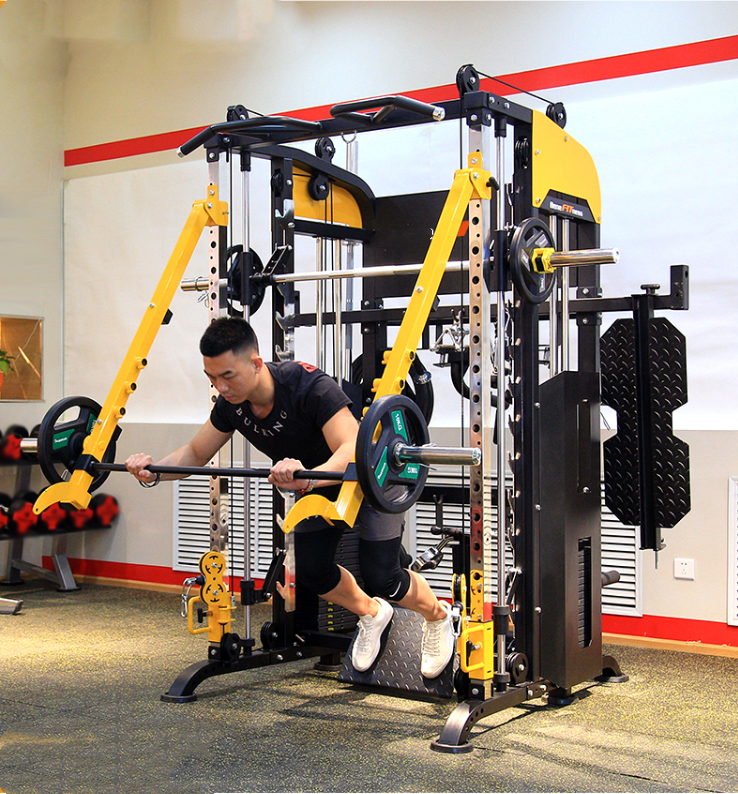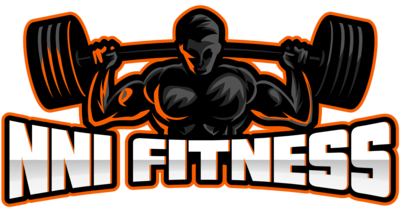
Here are some tips for using jammer arms safely and effectively:
- As you gain strength, gradually increase the weight from a light starting point.
- Use a controlled movement throughout the exercise.
- Don't lock out your joints at the top of the movement.
- Take a break if you feel pain.
Jammer arms offer several advantages over free weights, including:
-
Increased stability and control:
The arms provide a fixed point of resistance, which can help you to maintain proper form throughout the range of motion. This is especially beneficial for workouts like the snatch and clean that demand a lot of stability.
-
Increased range of motion:
You may lift the weight with the arms through a wider range of motion, which can help you gain strength and power.
-
Reduced risk of injury:
The arms provide a degree of safety, which can help to reduce the risk of injury. The inexperienced and those who are healing from injuries will find this to be extremely beneficial.
Here are some examples of exercises you can do with jammer arms:
- Chest press
- Shoulder press
- Bent-over rows
- Deadlifts
- Pull-ups
- Dips
- Triceps extensions
- Bicep curls
Chest press:
Leaning back, you take a seat on the bench with your feet flat on the ground. Grab the handles of the jammer arms with a neutral grip (palms facing each other). Press the handles up until your arms are straight, then slowly lower them back down.
Shoulder press:
You should stand with your feet shoulder-width apart and your back straight. Grab the handles of the jammer arms with an overhand grip (palms facing down). Press the handles up until your arms are straight, then slowly lower them back down.
Bent-over rows:
Your back should be approximately parallel to the floor as you stand with your feet shoulder-width apart. Grab the handles of the jammer arms with an underhand grip (palms facing up). Then, gradually drop the handles back down after pulling them up towards your chest.
Deadlifts:
Stand with your feet shoulder-width apart and bend down to grab the handles of the jammer arms with an overhand grip. Keep your back straight and lift the weights up until you are standing straight up. Slowly lower the weights back down.
Pull-ups:
Hang with your arms fully extended and take a firm overhand hold of the jammer arms' grips. You should carefully lower yourself back down after pulling yourself up until your chin is above the bar.
Dips:
Grab the handles of the jammer arms with an underhand grip and place your feet on the floor in front of you. Your elbows should form a 90-degree angle as you push yourself back up.
Triceps extensions:
You sit down on the bench, leaning back, your feet firmly on the ground. Grab the handles of the jammer arms with an overhand grip. Then, carefully bring your arms back down after raising them until your elbows are straight.
Bicep curls:
Stand with your feet shoulder-width apart and grab the handles of the jammer arms with a neutral grip. Curl the handles up towards your chest, then slowly lower them back down.
Conclusion:
Jammer arms are a versatile piece of equipment that can be used to target a variety of muscle groups. In comparison to free weights, they have a number of benefits, including as superior stability and control, a wider range of motion, and a lower chance of injury.
It's crucial to start with a modest weight and gradually raise it as you gain stronger if you want to use jammer arms safely and successfully. You should also use a controlled movement throughout the exercise and avoid locking out your joints at the top of the movement.
You may use jammer arms for a variety of exercises, including the chest press, shoulder press, bent-over rows, deadlifts, pull-ups, dips, and triceps extensions and bicep curls. With a little practice, you can use jammer arms to safely and effectively build muscle and strength.

